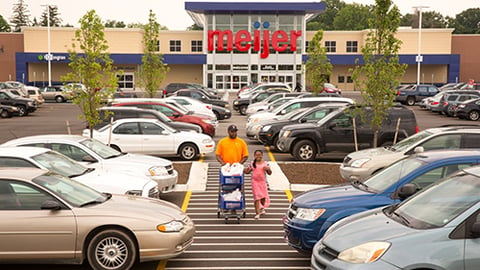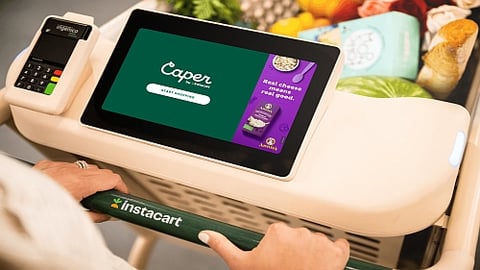EXCLUSIVE: What Does the Road Ahead Look Like for Personalization?
Today’s grocery shoppers come in all shapes, ages and sizes, but one thing holds true for nearly all of them: They crave personalized experiences. While grocers recognize the potential of creating a personalization program and plan to invest more in doing so, Dynamic Yield by Mastercard has found that only 19% of food retailers say personalization is part of their DNA.
Dynamic Yield by Mastercard’s State of Personalization Maturity in Grocery/CPG 2024 report, which Progressive Grocer was given an exclusive first look into, takes a deep dive into the current challenges and opportunities for personalization in the grocery/CPG industry. Brands are indeed optimistic about personalization, but the report, which surveyed grocery and CPG brands in 12 countries across America, Europe and the United Arab Emirates, Asia Pacific, and South America, highlights the fact that implementation and program maturity are not a one-size-fits-all journey.
[RELATED: The 8 Retailers Worthy of Being Called Top Regional Grocers]
The Personalization Journey
It’s not hard to believe that personalization is a top priority for grocers and CPG producers, especially as nearly 80% of grocery customers have come to expect tailored digital shopping experiences and become frustrated when they don’t receive them. Ori Bauer, CEO of Dynamic Yield by Mastercard, has a simple definition for true personalization when it comes to today’s digital customers. “Personalization is about making every digital experience relevant, not necessarily even personalized, but relevant to the specific consumer,” he told Progressive Grocer.
Dynamic Yield by Mastercard’s study did find that 73% of respondents believe their organization is on track toward establishing a culture of personalization, but nearly a quarter say they still need to orchestrate a program or quantify the impact. “As we expected, in the grocery world, personalization is in its infancy, and this therefore creates a big opportunity,” Bauer says.
As Bauer explains, many business segments, especially e-commerce, have a very high maturity level when it comes to this sort of personalization. Even everyday apps like Spotify, Instagram and Netflix offer consumers a curated, relevant experience that they’ve come to expect from every digital experience they encounter.
According to Bauer, a large number of retailers do have basic levels of personalization down pat, including showing popular products and those that have already been purchased by the customer. That can be where many companies get stuck, however, especially considering the study points to the fact that most organizations lack dedicated resources at the team level.
“We really see grocers are still struggling with this,” Bauer says. “Some of them said they still don’t have the technology, and 97% said some of their core website elements still don’t support testing or doing more advanced personalization.”
Every journey starts with a small step, though, Bauer says, asserting that any missed opportunities in personalization can still be remedied. “You don’t have to go all the way on day one. You can start by taking small steps, even by doing something as simple as personalizing the homepage button when you come into the website,” he explains.
Harnessing the Opportunity
The first step toward meaningful personalization, Bauer says, is to focus on measurement, data and infrastructure. “It’s both ensuring that you have the right infrastructure to collect the data as the grocer, and provide it as the basis for personalization,” he explains.
While robust, vetted data is always the first key to unlocking personalization, a one-to-one, relevant experience at scale will eventually require the use of generative AI. While that’s the case, Bauer shares, food retailers don’t have to go all in on day one. They can continue to test, integrate new capabilities and create an ongoing program, and they also don’t have to reinvent the wheel. “You can take other ideas from e-commerce and others,” Bauer asserts.
[Never miss a story –sign up for Progressive Grocer's FREE Daily newsletter]
With the disconnect the Dynamic Yield by Mastercard study found between personalization maturation and both talent and core technology competencies available to ensure everything is set up and running smoothly, Bauer also says choosing the right partner can be imperative.
“The idea here is to keep going. You have to think about personalization as a program, not as a one-time thing,” Bauer explains. “The idea is to keep innovating, keep testing, keep adding more personalization capabilities to your digital journey, then basically build this program that sees continuous improvement of performance.”
When all is said and done, consumers, especially those in Gen Z, have come to expect personalization and it is becoming more necessary than ever for grocers to provide truly relevant, personalized online experiences. While Bauer believes e-commerce personalization is not yet table stakes for grocers, it soon will be, and those that have not harnessed its power will be left behind.
“At the end of the day, create an experience that is valuable and enjoyable to your consumers,” Bauer concludes. “If you do that right, then you also create loyalty. If you do personalization right, then you increase loyalty. One drives the other.”











